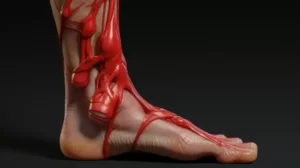Is marijuana medicine? While opinions on the matter might vary, an increasing number of medical illnesses are effectively treated by marijuana. There are more than 20,000 published scientific studies or reviews on marijuana and its cannabinoids. It seems that science and the medical community are increasingly accepting marijuana as medicine. In this article, we will explore the history of marijuana, the medical conditions it can treat, and the differences between medicinal and recreational use.
A Brief History of Marijuana
Marijuana, also known as cannabis, contains more than 400 compounds, including 60 active ingredients known as cannabinoids. The one ingredient mainly responsible for its psychological effects is called tetrahydrocannabinol (THC). The historical use of cannabis is fascinating. For example, more than 2 pounds of cannabis was discovered in a 2,700-year-old ancient shaman gravesite, indicating that ancient communities grew and used cannabis for pharmaceutical and religious purposes.
In the United States, however, things have taken a different turn. The Marijuana Tax Act of 1937 prohibited the recreational, industrial, and even therapeutic use of cannabis. Later in 1970, Congress classified marijuana as a Schedule I substance, which means doctors cannot prescribe it for any purpose.
Medical Conditions Treated by Marijuana
Medical conditions that marijuana may treat include:
- Cancer
- AIDS
- Anorexia
- Arthritis
- Chronic pain of any type
- Glaucoma
- Migraines
- Persistent muscle spasms
- Multiple Sclerosis
- Seizure disorders
- Any chronic disabling medical condition or symptom
There are many other medical conditions marijuana may treat, which vary by state law. These can include depression, anxiety disorders (panic, PTSD), bipolar disorder, schizophrenia, insomnia, Alzheimer’s dementia, fibromyalgia, tendonitis, chronic fatigue syndrome, lupus, motor nerve disorders, movement disorders, sensory or motor neuropathies, tinnitus, ADD, ADHD, autism, Asperger’s, gastritis, GERD, adenomyosis, amyloidosis, asthma, allergies, sinusitis, cluster headaches, ulcerative colitis, Crohn’s disease, IBS, cystic fibrosis, skin diseases (psoriasis, pruritis), Raynaud’s phenomenon, Grave’s hyperthyroidism, blood clotting disorders, herpes, hypertension, urinary incontinence, macular degeneration, menopausal symptoms, and hyperhydrosis (excessive sweating).
You can find a more comprehensive list of conditions for which medicinal cannabis has been found safe and useful here. Be sure to do your own research to find out if marijuana is legal to treat your medical condition.
Medicinal vs. Recreational Use
In its raw form, marijuana is not psychoactive (it doesn’t give you the high that recreational users want). However, when smoked, marijuana’s THC becomes psychoactive. Therefore, medicinal use of cannabis in its raw form is quite a bit different than smoking it to get high.
Unlike many drugs, you cannot die from a fatal overdose of marijuana. In 1995, the World Health Organization stated that there were no recorded cases of overdose fatalities attributed to cannabis, and the estimated lethal dose for humans extrapolated from animal studies is so high it cannot be achieved by users. However, marijuana is not harmless. Inhalation may worsen respiratory illnesses, and people with decreased lung function or a history of heart disease or stroke should take special precautions.
That said, recreational marijuana use can be addictive and lead to apathy, disinterest in life, and declining mental health. According to a 2005 rat study, marijuana promotes neurogenesis and helps treat anxiety and depression. In a 2010 investigation, California researchers reported that marijuana should be a first-line treatment for neuropathy, as well as many other serious conditions.



